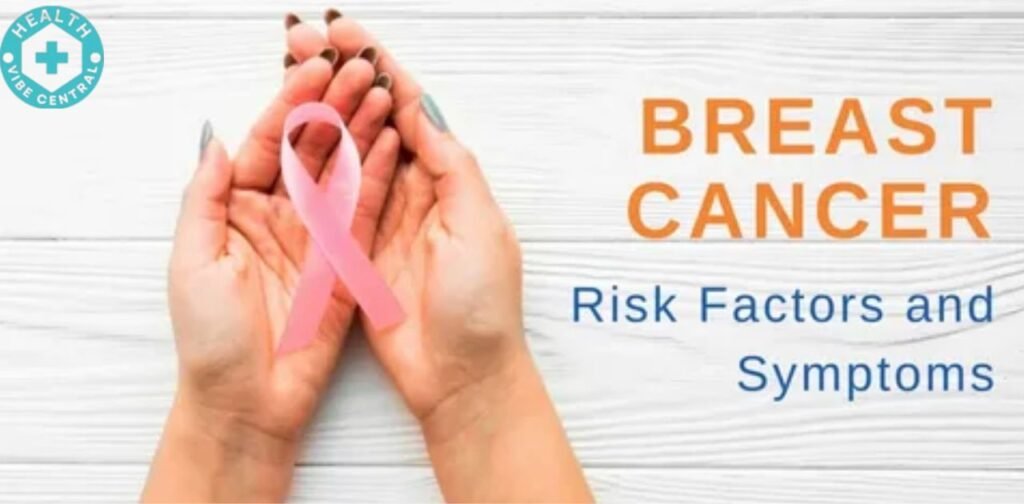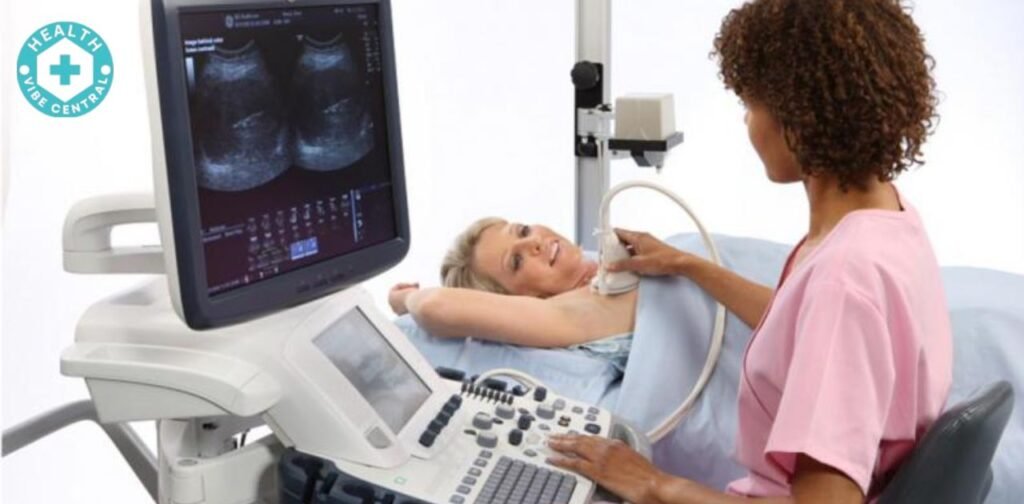
The condition of breast cancer ranks among the leading types of cancer affecting female bodies though it can develop in male bodies too. Breast cancer researchers have not discovered the specific cause of the disease though several risk behaviors lead to its development. The necessity of early diagnosis leads to better treatment outcomes because treatment brings successful results when performed at the point of diagnosis.
The paper intends to outline the primary causes together with breast cancer risk elements followed by symptoms and options for breast cancer treatment.
1. What is Breast Cancer?
The breast tissues become involved in the cancer process which defines breast cancer as a different type of cancer from other forms.
The phenomenon results in breast cell multiplication without control that forms tumors. Breast Cancer has the ability to spread throughout different tissues and Breast Cancer: lymph nodes and to extend into the lungs and bones and reach the liver when it remains undiagnosed or when proper treatment is not administered.
The categories of breast cancer include several types which include: Ductal carcinoma in situ (DCIS): An invasive cancer that only affect the ducts of the breast. The female Breast Cancer: invasive ductal carcinoma (IDC) starts as a malignant ductal breast cancer before spreading across adjacent tissues. Three factors from tumor tissue make triple-negative breast cancer one of the most deadly types of breast cancer.
2. Causes and Risk Factors of Breast Cancer

Science currently does not fully understand what causes breast cancer to appear although it established some risk factors that can influence women to develop the disease. Several breast cancer risk factors exist which either can or cannot be controlled by people.
Genetic Factors
BRCA1 and BRCA2 mutations: Alterations in these genes Breast Cancer: considerably raise the risk of developing breast cancer. Some women may also have these mutations in if they do in their close relatives.
Family history:
First degree relative having had breast cancer especially when diagnosed at a young age increases your risk of having the disease.
Use of Hormonal and Reproductive Treatments
Hormone replacement therapy (HRT): HRT as mentioned consumed after the menopause significantly increases the risk of breast cancer.
Early menstruation and late menopause: Early, that is if a Breast Cancer: woman begins menstruation at less than 12 years of age or late, that is if a woman begins menopause after 55 years aged, exposure risk is higher due to estrogen.
Pregnancy and breastfeeding: Women in childbearing age also the one who have children later in life or never in their lifetime, the ones who do not breastfeed their babies are also in a higher risk.
Lifestyle Factors
Alcohol consumption: Daily use of alcohol to some extent Breast Cancer: increases the chances of contracting
breast cancer.
Being overweight during post-menopause combined with physical inactivity leads to this particular breast cancer risk.
Smoking: Smoking is associated to increased susceptibility of breast cancer diseases.
Other Risk Factors
Age: Breast cancer incidence is age-related and most women Breast Cancer: who develop this disease are over the age of fifty years.
Radiation exposure: Exposure previously to radiation therapy in the breast region during childhood or adolescence proves to be a determinant factor in developing this type of cancer.
3. Symptoms of Breast Cancer

Lump the breast or armpit:
That a lump that cannot be felt through the skin is frankly a hard knot in the breast or under the arm is usually the first sign of breast cancer. Benign tumors may also feel like lumps, but any type of Breast Cancer: lump should be examined by a physician.
Change in breast size or shape:
Breast cancer is also characterized by any kind of the breast’s alteration in size or form, with no apparent cause.
Nipple discharge:
Any gushing from the nipple particularly if the discharge is bloody or clear is suggestive of breast cancer.
Nipple retraction:
The nipple may invert or disappear altogether.
Breast skin changes: Any change in colour, any kind of edema where the skin of the breast has an orange peel feeling or appearance or if the skin has thickened it may be a sign of breast cancer.
Pain in the breast or nipple
Although in most cases breast cancer is without symptoms some women may experience pain or mild discomfort.
If you experience any of these signs, it is recommended to go to a health care provider for assessment.
4. Breast Cancer Prevention
Although some causes of breast cancer like genes and ages cannot Breast Cancer: be avoided here some things that you can do to avoid this diseases.
Tips for Reducing Breast Cancer Risk:
Due to their importance in identifying diseases in an early stage breast cancer clinical exams together with mammograms require regular screenings.
Weight maintenance plays a crucial role because postmenopausal breast cancer risk increases with age and obesity makes the condition worse. You should focus on taking healthy foods particularly fruits and vegetables with lean proteins and whole grain food products.
Exercise regularly:
People can obtain these lowered risks through workouts that meet either the 150-minute moderate activity standard or the 75-minute vigorous activity threshold in a week. The reduction of alcohol consumption results in lower risk for developing Breast Cancer:b breast cancer.
The recommendation to abstain from alcohol exists although drinking one unit a day may help prevent breast cancer occurrences
Quit smoking:
Scientific studies have revealed that cigarette usage increases breast cancer risk for women who have not yet reached menopause.
Motherhood through breastfeeding reduces the risk of getting breast cancer when moms maintain breastfeeding for at least half a year.
5. Breast Cancer Screening and Diagnosis
Breast cancer treatment outcomes improve greatly when clinicians discover the condition early through proper screenings. Screenings are strongly advised to different risk groups depending on their age and individual genetic background.
Common Screening Methods:
Patients receive a breast X-ray known as a mammogram that identifies abnormal tissue or growth in breast cells.
The screening guidelines state that women over 40 years should receive yearly mammograms but higher-risk women need to start mammogram screenings yearly from the beginning.
Breast ultrasound:

The technique creates breast images through ultrasound waves that allow doctors to examine breast tissue whenever they detect a breast lump for breast cancer diagnosis.
High risk women sometimes choose breast MRI scanning of their breast tissue area in order to get clear details about their breast tissue condition.
Diagnosis:
Further tests will determine cancer of the breast after feeling a malignant growth or unusual breast tissue.
These tests include: The medical professional uses a biopsy procedure to extract tissue from the questionable area which then gets processed for cancer cell inspection.
The BRCA1 and BRCA2 genes can be tested genetically when someone has a historical history of breast cancer. The strategy for mammograms for women age 40 and above depends on risk assessment and mandates annual testing or testing occurring every 1 to 2 years.
6. Breast Cancer Treatments
Medical intervention for breast cancer relies on factors that include tumor classification along with disease stage and dimensions combined with patient wellness status. The main goal of breast cancer treatment consists of cancer removal with metastasis prevention which can be achieved through either breast lump partial removal or complete breast removal.Also known as lumpectomy and mastectomy.Radical therapies such as radiation kill cancer cells within target areas. Women who reach age 40 and beyond need regular mammograms periodically throughout 1-2 years based on their personal Breast Cancer susceptibility risks.
Breast ultrasound:
Doctors use an ultrasound machine to generate internal breast images through sound waves during physical examination for checking breast lumps.
A magnetic resonance imaging (MRI) scan serving as a breast imaging test will be suggested for people who have a high risk of developing breast cancer.
Diagnosis:
To confirm breast cancer medical professionals will conduct additional examination procedures on concerning breast structures. These tests include:
Biopsy
Women who come from families with breast cancer risk may decide to take genetic examinations for BRCA1 and BRCA2 gene mutations
Genetic testing:
Breast cancer protection develops through education along with correct actions and knowledge sharing we prevent further deaths due to breast cancer.
Conclusion Early Detection and Empowerment
The serious nature of breast cancer as a deadly disease has diminished due to proper screening processes and early detection along with cancer prevention methods and modern treatment protocols which resulted in reduced mortality statistics. Prophylactic measures become possible when ovarian cancer shows symptoms since proper nutritional choices combined with advanced screening techniques and well-informed risk factor analysis decrease such risks. Medical diagnosis of breast cancer during its initial stage allows full recovery for patients and many women with this condition can continue living healthily.